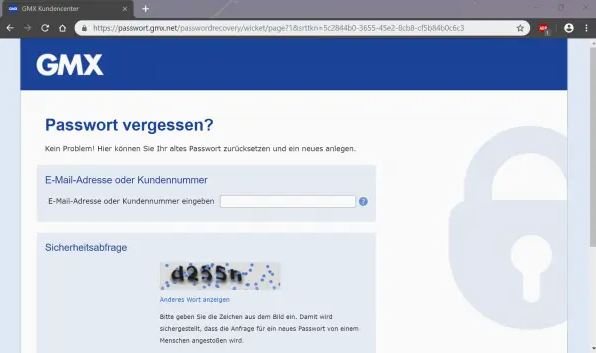Probleme Bei Gmx Login – How to Login To Probleme Bei Gmx
Probleme Bei Gmx Login – How to Login To Probleme Bei Gmx ,Probleme Bei Gmx Login, Probleme Bei Gmx Login Portal, How to Login To Probleme Bei Gmx, How to Login To Probleme Bei Gmx Portal
To log in to Probleme Bei Gmx, please follow these general steps:
- Open a web browser and go to the Probleme Bei Gmx website. https://hilfe.gmx.net/account/login/kann-mich-nicht-einloggen-login-bekannt.html
- Look for the “Login” or “Sign In” button on the website’s homepage. It is typically located in the top-right corner or within a navigation menu.
- Click on the “Login” or “Sign In” button to proceed to the login page.
- On the login page, you will likely be prompted to enter your username or email address and password.
- Fill in the required fields with your registered username or email and password.
- Double-check the information you’ve entered to ensure it is correct.
- Click on the “Login” or “Sign In” button to submit your credentials and access your Probleme Bei Gmx account.
RELATED: Gmail login different user – How to login to Gmail with a different Account
I advise contacting Probleme Bei Gmx’s customer care if you run into any difficulties throughout the login procedure for more help. They will be able to assist you with any login-related issues you might be having and provide you detailed instructions relevant to your account.
Probleme Bei Gmx Login – How to Login To Probleme Bei Gmx

Probleme Bei Gmx Login – How to Login To Probleme Bei Gmx
Depending on the platform or service you’re referring to, the registration process for various accounts can vary. But I can give you a rough breakdown of the procedures for setting up an account:
- Visit the Probleme Bei Gmx website or application: Go to the official website or open the app of the platform or service you want to register for. https://hilfe.gmx.net/account/login/kann-mich-nicht-einloggen-login-bekannt.html
- Locate the registration or sign-up option: Look for a “Register,” “Sign Up,” or “Create Account” button/link on the homepage or login page.
- Provide your information: Fill in the required information in the registration form. Typically, this includes your name, email address, password, and sometimes additional details such as date of birth or phone number.
- Verify your email or phone number: Some platforms may require you to verify your email address or phone number by sending a verification code. Follow the instructions provided to complete this step.
- Set up your account preferences: Once your account is created, you may be prompted to set up preferences such as profile picture, privacy settings, or notification preferences. Fill in the required information as desired.
- Read and accept terms and conditions: Review the terms of service or user agreement provided by the platform and accept them if you agree. It’s important to understand the terms and conditions before proceeding.
- Complete the registration: After submitting the necessary information and accepting the terms, your registration process should be complete. You may be automatically logged in or prompted to log in using the credentials you just created.
It’s vital to remember that these procedures are only general recommendations, and each platform or service may have a different registration procedure. Verify that you adhere to the directions given by the specific website or application you desire to register with.
Things To Consider Before Login to any Account
Legitimacy and Trustworthiness: Verify the authenticity and trustworthiness of the website or service you are logging into. Make sure you are accessing the official website or app and not a phishing site that may attempt to steal your login credentials.
Account Security Measures: Check if the account has security features like two-factor authentication (2FA) or login alerts. Enable these features whenever possible to add an extra layer of protection to your account.
Strong and Unique Password: Use a strong, unique password for each of your accounts. Avoid using common or easily guessable passwords, and consider using a password manager to securely store and manage your passwords.
Secure Network Connection: Ensure you are using a secure network connection, especially when logging in to sensitive accounts. Avoid logging in using public Wi-Fi networks or unsecured connections that may put your data at risk.
Updated Software and Security: Keep your devices and software up to date with the latest security patches and updates. This helps protect against known vulnerabilities that could be exploited by attackers.
Privacy Policy and Data Handling: Review the privacy policy and data handling practices of the service you are logging into. Understand how your personal information is collected, used, and protected by the platform.
Phishing Awareness: Be cautious of phishing attempts, which are fraudulent attempts to obtain your login credentials. Verify the legitimacy of emails, messages, or links before providing any login information. Avoid clicking on suspicious links or providing personal information if you are unsure of the source.
Account Recovery Options: Familiarize yourself with the account recovery options provided by the service. Make sure you have updated contact information, such as an alternate email or phone number, in case you need to recover or reset your account.
Account Activity Monitoring: Regularly monitor your account activity for any suspicious or unauthorized access. Check your account settings and review recent login history to identify any unusual or unrecognized activity.
Responsible Account Usage: Use your accounts responsibly and follow best practices for online security. Avoid sharing your login credentials, be cautious of the information you provide online, and be mindful of the platforms and services you choose to log in to.
By considering these factors, you can enhance your online security and protect your accounts from unauthorized access or data breaches.




